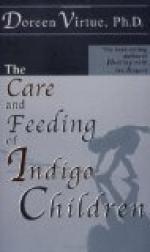SCURVY
What is scurvy and how is it produced?
Scurvy is a disease of general nutrition, usually caused by the long-continued use of improper food. Most of the cases come from the use of the prepared infant’s foods sold in the stores, especially when they are given without fresh milk; occasionally the use of condensed milk and of sterilized milk is followed by scurvy; sometimes it is seen when, owing to feeble digestion, it has been necessary to make cow’s milk very weak for a long time.
What symptoms are seen in an infant with scurvy?
At first there is only indefinite and occasional soreness in the legs so that the child cries out when handled. As this soreness becomes more severe the child is often thought to have rheumatism. The gums swell and are of a deep purple colour. There may be bleeding from the gums, nose, bowels, or black-and-blue spots may be seen upon the legs. The ankles and knees may swell. The child grows very pale, loses appetite and weight, and sleeps badly.
What should be done when an infant shows signs of scurvy?
The diet should at once be changed to fresh milk, properly modified according to the child’s digestion, but not sterilized or pasteurized. The juice of a sweet orange should be given, best about an hour before the feeding. At first one or two teaspoonfuls, four or five times a day; later, more may be given if the symptoms are not improved.
Properly treated an infant with scurvy generally recovers promptly and completely. If not recognised, or untreated, it may cause death.
CONSTIPATION
When it is necessary to move the bowels immediately, what are some of the easiest methods?
An injection of one tablespoonful of sweet oil may be given, or half a teaspoonful of glycerine in one tablespoonful of water, or a teacupful of tepid soap and water, or a glycerine suppository. None of these should be continued excepting under the physician’s directions.
What sort of a syringe is to be preferred for giving an injection to an infant?
The bulb syringe is the simplest; this consists of an oval bulb of soft rubber and a soft rubber or a hard rubber tip. It holds one or two ounces.
What is the most essential thing in preventing or overcoming constipation?
The formation of the habit of having the bowels move every day regularly at the same hour, and proper early training (see page 156).
What is the best hour?
In most cases immediately after the first meal in the morning.
What are some simple means by which constipation may be relieved?
The best are diet, suppositories, and massage.
The changes to be made in the milk of constipated infants have been mentioned on page 82. The addition to the milk of some of the malted foods, such as Mellin’s food or malted milk, is sometimes useful. For little children the fruit juices are particularly beneficial when given half an hour or more before the first morning feeding, with half a glass of water.




